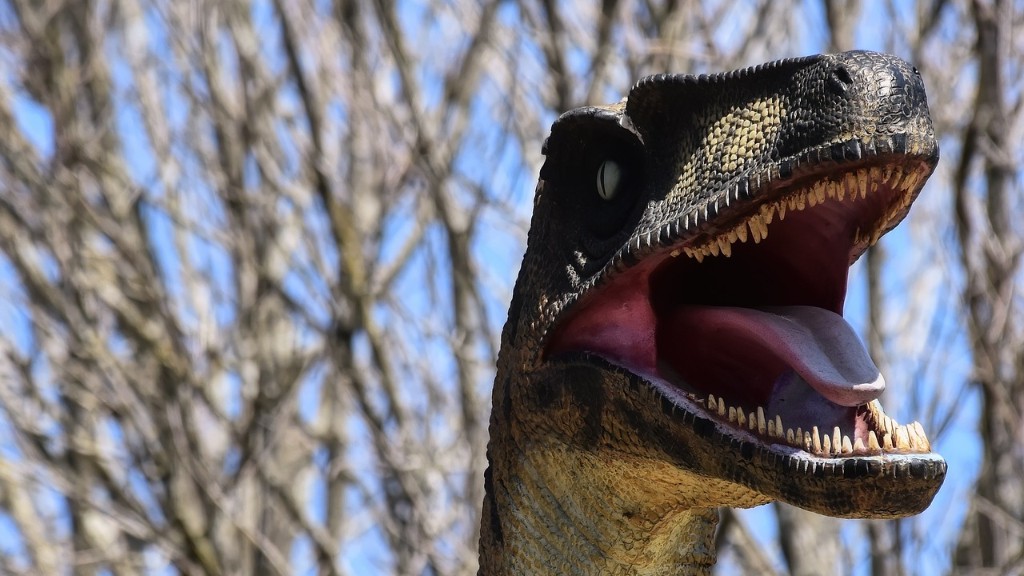How Many Meteors Did It Take for Dinosaurs to Go Extinct?
Imagine a world of majestic creatures roaming freely, ruling over the land with their dominance and grace. The dinosaurs – the ancient giants of our planet, captivating our imaginations with their mysterious existence. But then, something catastrophic happened. Something that forever changed the course of history.
The extinction of the dinosaurs has long been a subject of scientific debate and fascination. While there are various theories, one prevailing hypothesis suggests that a massive asteroid impact may have been the cause. But just how many meteors did it take for dinosaurs to go extinct? Let’s delve into this awe-inspiring mystery.
Picture this: a fiery ball hurtling through space, traveling at unimaginable speeds. It was the ultimate cosmic disaster waiting to happen. An asteroid, carrying immense destructive power, racing towards Earth on a collision course. The impact would be cataclysmic, capable of producing a chain of devastating events spanning the planet.
Now, let your mind wander and imagine the first meteor striking the Earth. The incredible force sends shockwaves echoing through the land, toppling trees, shattering mountains, and triggering tsunamis that engulf entire coastlines. The sheer power of this single impact would have decimated all life within its reach, leaving nothing but destruction in its wake.
Mass Extinction: A Chilling Reality
The extinction event that wiped out the dinosaurs is known as the Cretaceous-Paleogene (K-Pg) extinction event. It occurred approximately 66 million years ago and led to the eradication of about 75% of all species on Earth. This event marked the end of the Mesozoic Era and allowed for the rise of mammals and eventually, our human ancestors.
Scientists believe that the K-Pg event was a result of a series of asteroid impacts. One particularly ominous impact site is located in what is now known as the Chicxulub crater in the Yucatan Peninsula, Mexico. This colossal crater is over 110 miles wide, evidence of the tremendous energy released by the meteor’s impact.
But how many meteors were responsible for this mass extinction? As shocking as it may sound, it only took one colossal meteor to initiate the cataclysmic chain of events that decimated the dinosaurs. This single impact triggered a chain reaction, leading to a plunge in temperature, toxic atmospheric conditions, wildfires, and a colossal tsunami that had ripple effects throughout the entire planet. The dinosaurs simply couldn’t withstand the magnitude of these destructive forces.
The Impact Fallout: Devastation on a Global Scale
As the meteor struck, immense amounts of dust, debris, and vaporized rock were ejected into the atmosphere. These materials were catapulted high into the sky, forming a massive cloud of darkness that obscured the sun for months, if not years. Without sunlight, photosynthesis became virtually impossible, causing a catastrophic collapse in the food chain.
Without plants to sustain them, herbivorous dinosaurs faced a dire predicament – starvation. With their primary food source diminished, these magnificent creatures dwindled in numbers. And where herbivores struggled, carnivores suffered as well. The lack of prey pushed these dominant predators into a battle for survival, resulting in further extinction.
Beyond the immediate aftermath, the lingering effects of the meteor impact continued to wreak havoc. The colossal tsunamis caused by the impact obliterated coastlines and coastal habitats, wiping out countless species that relied on these ecosystems.
The Resilience of Life: A New Chapter Begins
Amidst the chaos and destruction, nature has always shown a remarkable ability to recover and adapt. While the meteor impact undoubtedly caused immense devastation, it also paved the way for new life forms to flourish. Mammals, once overshadowed by the dinosaurs, seized the opportunity and rapidly diversified, eventually giving rise to numerous species, including our own.
And so, the dinosaurs, mighty and awe-inspiring as they were, met their end in a cataclysmic event triggered by a single meteor impact. Their reign on Earth may have come to an untimely and abrupt conclusion, but their legacy lives on in our fascination and curiosity.



